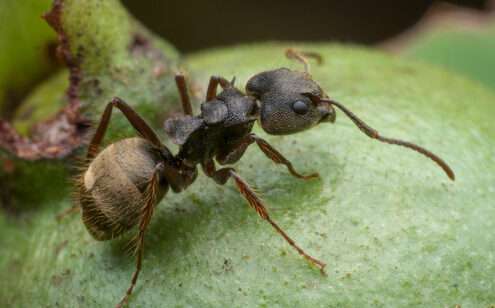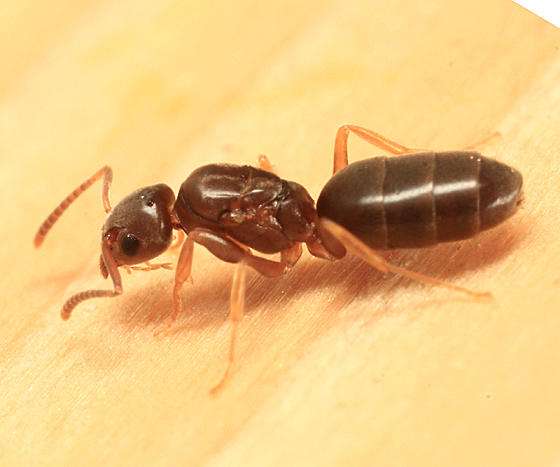
Ants belonging to the genus Dolichoderus are widespread.
Description
Dolichoderus attelaboides is the representative species. The body length of worker ants in this species is normally around four millimeters, and their thick, rigid, and highly sculptured integument may identify them. Some species have a saw-like flange on the underside of the skull, close to the base of the mandibles. Along the longitudinal suture in the middle plate of the metathorax, deep impressions can be noticed. The propodeum, or first abdominal segment, has a distinctive concave back aspect when viewed from the side. The petiole, one section, sits between the gaster and the alitrunk. The cloacal orifice is not a circular hole, but a horizontal slit. A few rather stiff, upright bristles surround it.

Distribution
With the exception of Antarctica, every continent has members of this genus.
Diet
They predominantly consume plant-based diets recognized for their nutritional imbalance and incompleteness at low trophic levels.
Biology
Colonies are built in a variety of places, including earth, curled leaves, hollow plant stems, and cartons, which are created by ants chewing wood and combining it with secretions in a manner akin to how wasps construct their nests. Some species are particularly adaptable; for example, Dolichoderus pustulatus nests underground in the northern United States while spending its entire life in trees in the southern United States. The workers feed on tiny arthropods as well as sap-sucking insects like aphids and scale insects that exude honeydew. Some species release an odorous fluid.
Table





